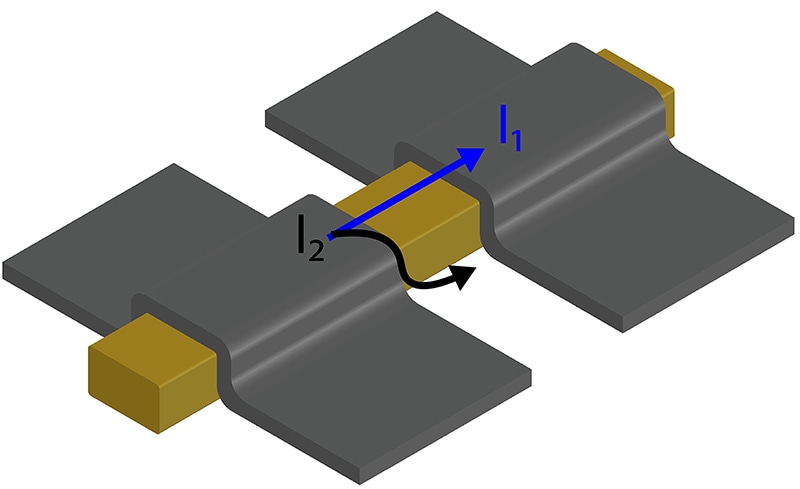Feb 27 2019
Quantum computers will process considerably more information simultaneously compared to present-day computers. But the building blocks that hold this information—quantum bits, or “qubits”—are extremely sensitive to their environment to function sufficiently well at the moment to create a practical quantum computer.
 A new material could “immunize” topological quantum bits so that they are resilient enough for building a quantum computer. (Purdue University image/Morteza Kayyalha)
A new material could “immunize” topological quantum bits so that they are resilient enough for building a quantum computer. (Purdue University image/Morteza Kayyalha)
In other words, qubits need an enhanced immune system before they can further develop.
A new material, designed by Purdue University scientists into a thin strip is one-step closer to “immunizing” qubits against noise, such as heat and other components of a computer, that impedes with how well they contain information. The research has been published in Physical Review Letters.
The thin strip, known as a “nanoribbon” is a type of a material that transmits electrical current on its surface but not on the inside—referred to as a “topological insulator”—with two superconductor electrical leads to make a device known as a “Josephson junction.”
A qubit “entangles” with other qubits in a quantum computer. This means that reading the quantum information from one qubit automatically impacts the outcome from another, regardless of how far apart they are.
Without entanglement, the rapid calculations that make quantum computing unique cannot take place. But entanglement and the quantum nature of the qubits are also sensitive to noise; therefore, they need additional protection.
A topological-insulator nanoribbon Josephson junction device is one of many options scientists have been exploring for developing more resilient qubits. This resilience could result from special properties created by conducting a supercurrent on a topological insulator’s surface, where an electron’s spin is locked to momentum.
The issue thus far is that a supercurrent is prone to leak into the inside of topological insulators, stopping it from flowing entirely on the surface.
To become more resistant, topological qubits require supercurrents to flow via the surface channels of topological insulators.
We have developed a material that is really clean, in the sense that there are no conducting states in the bulk of the topological insulator. Superconductivity on the surface is the first step for building these topological quantum computing devices based on topological insulators.
Yong Chen, Professor of Physics and Astronomy and of Electrical and Computer Engineering, and Director of Purdue Quantum Science and Engineering Institute, Purdue University.
Morteza Kayyalha, a former Ph.D. student in Chen’s lab, could demonstrate that the supercurrent wraps completely around the new topological insulator nanoribbon at temperatures 20% lower than the “critical temperature,” when the junction turn out to be superconducting. The experiment was carried out in partnership with the lab of Leonid Rokhinson, a Purdue professor of physics and astronomy.
It’s known that as the temperature lowers, the superconductivity is enhanced. The fact that much more supercurrent flowed at even lower temperatures for our device was evidence that it is flowing around these protective surfaces.
Yong Chen, Professor of Physics and Astronomy and of Electrical and Computer Engineering, and Director of Purdue Quantum Science and Engineering Institute, Purdue University.
This research was supported by many awards from the National Science Foundation, U.S. Department of Energy, U.S. Department of Defense Office of Naval Research and the Simons Foundation.